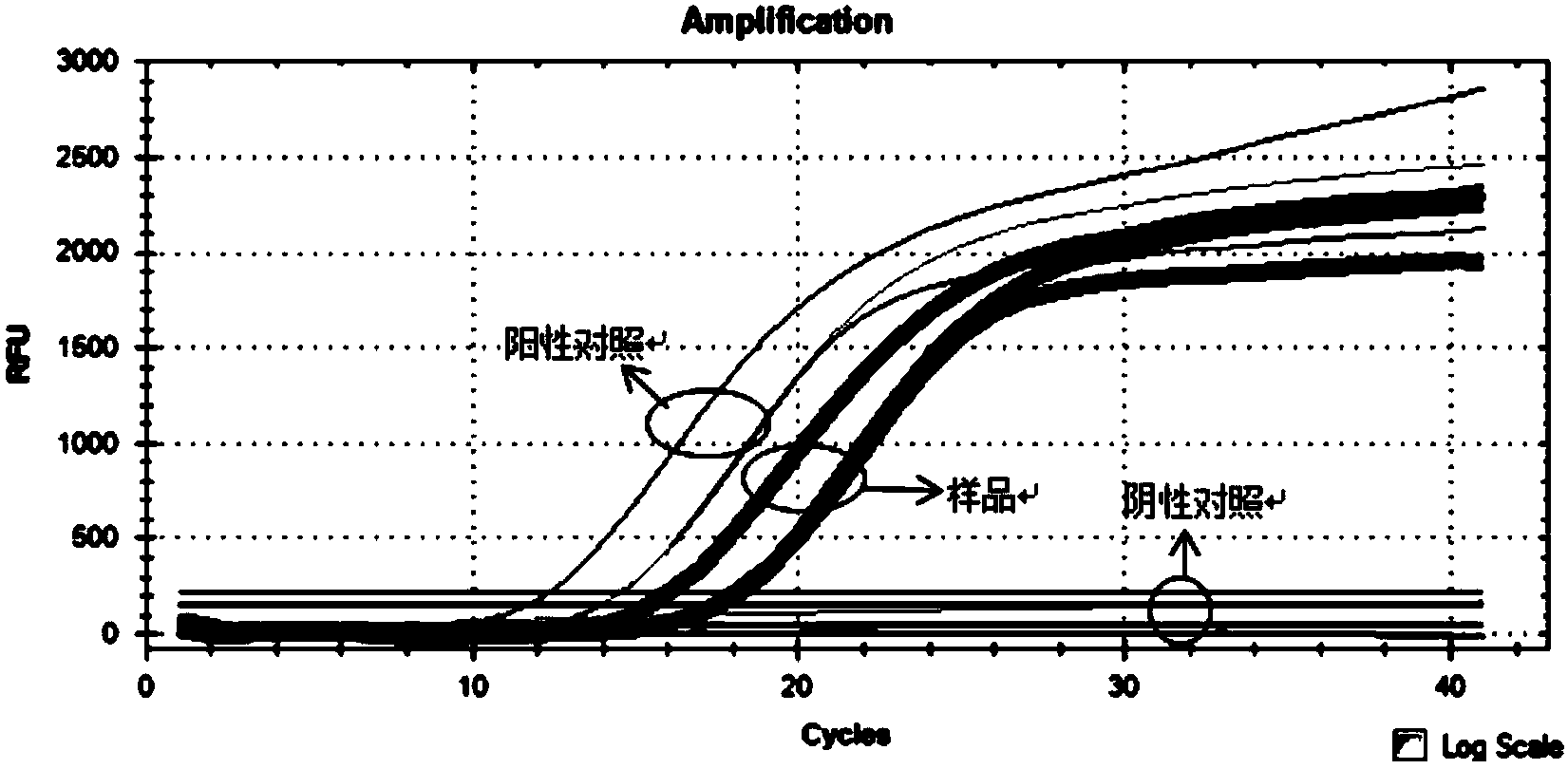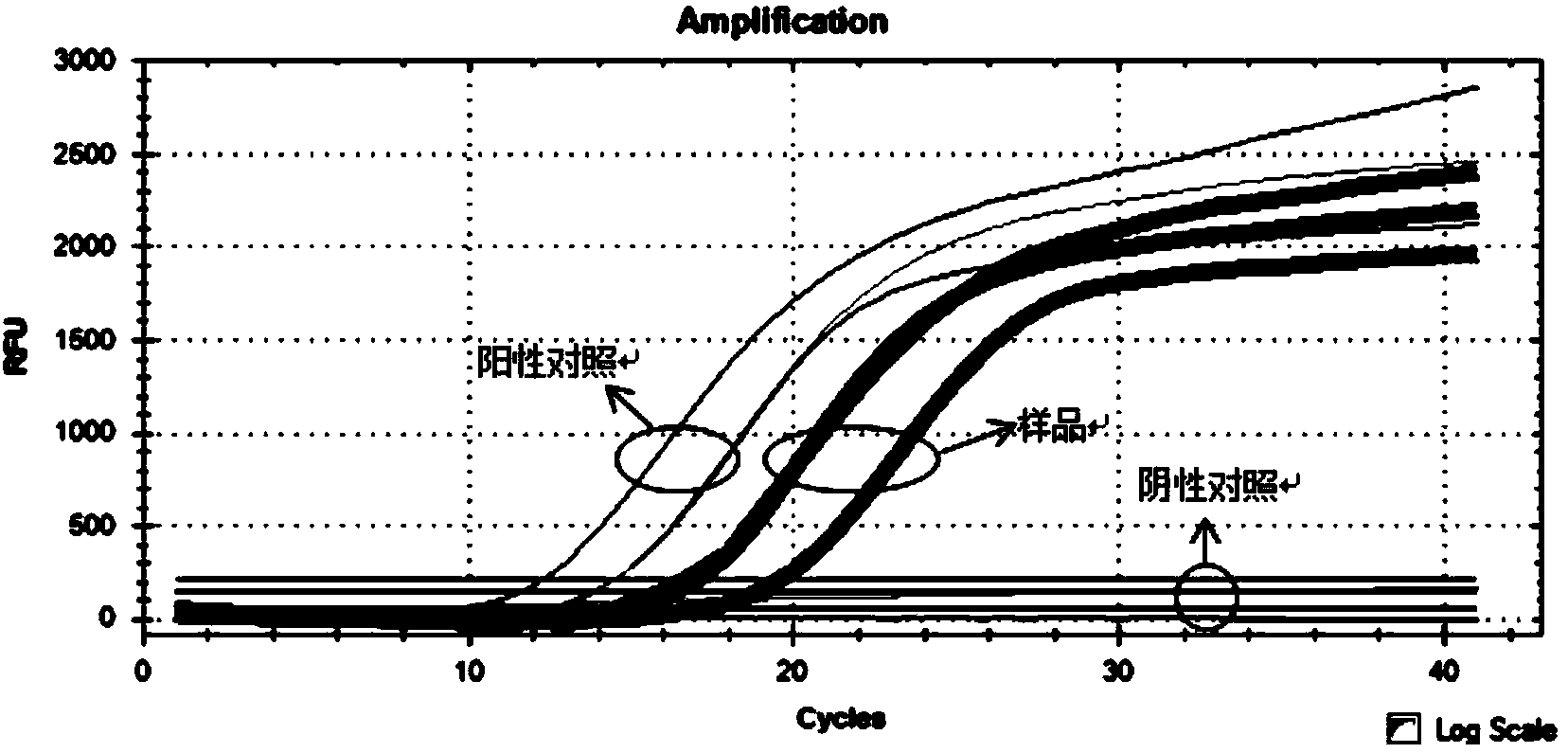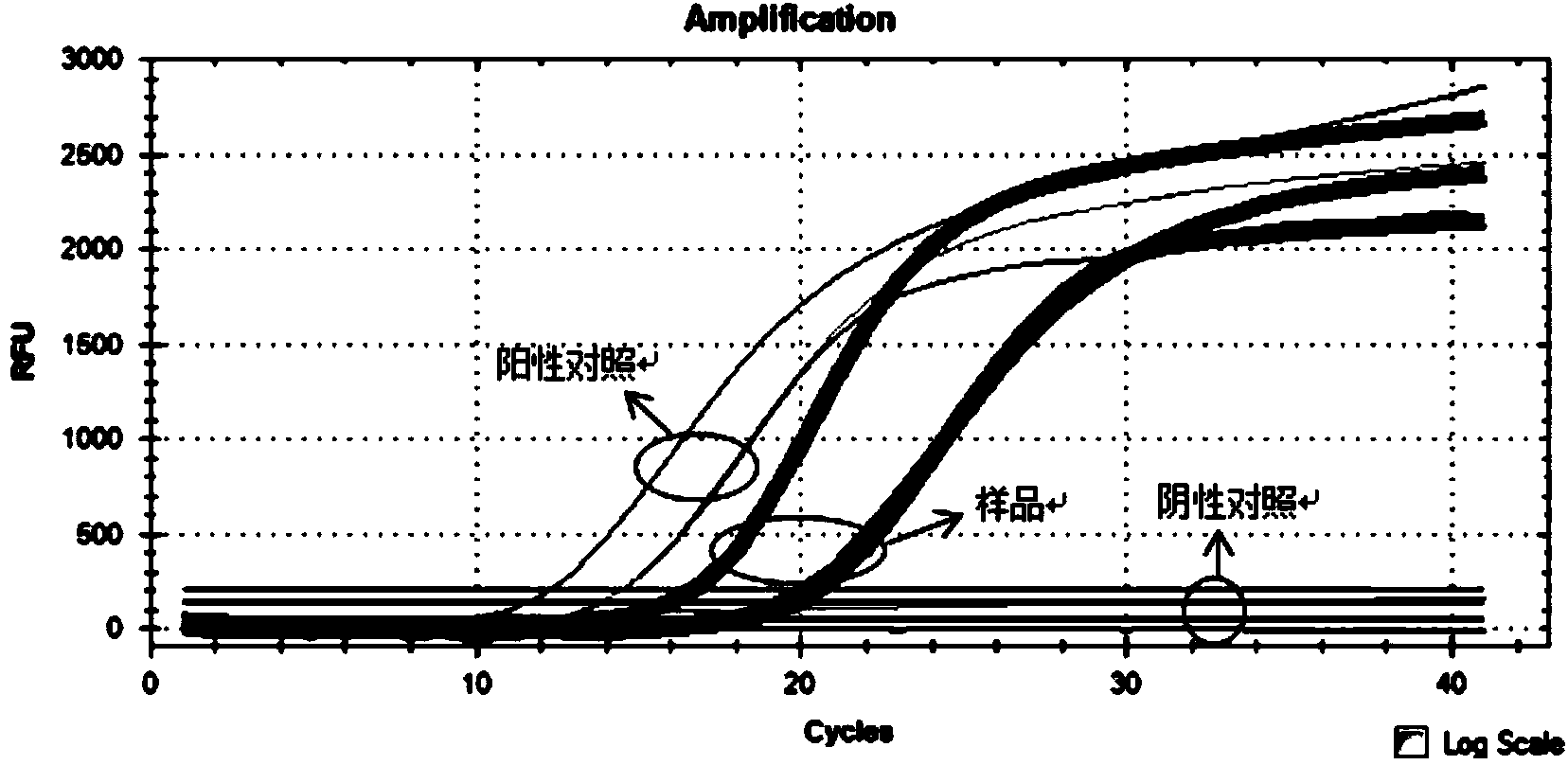Primers, probes and detection kit for detecting human HCC (Hepatocellular Carcinoma) marker
A technology of liver cancer cells and markers, which is applied in the field of molecular biology, can solve the problems of lack of mature quantitative standards for new markers and limited sensitivity of detection, and achieve the effect of simple detection method, strong specificity and high sensitivity
- Summary
- Abstract
- Description
- Claims
- Application Information
AI Technical Summary
Problems solved by technology
Method used
Image
Examples
Embodiment 1
[0041] Example 1 Establishment of multiple real-time fluorescent quantitative PCR detection method for human early liver cancer cell markers
[0042] According to the nucleotide sequences encoding glypican and alpha-fetoprotein published on GenBank (Accession No.: AAB58754; AAH35972), specific primers and probes for multiple real-time fluorescent quantitative PCR detection were designed, And carry out different fluorescein labeling. The specific primers and TaqMan probe sequences are shown in Table 1:
[0043] Table 1 Specific primers and TaqMan probes
[0044]
[0045]
[0046] Method for detecting human liver cancer cells based on multiple real-time fluorescent quantitative PCR technology:
[0047] 1. The object of detection is cDNA formed by reverse transcription of mRNA encoding liver cancer cell marker proteins (glypican and alpha-fetoprotein): sample processing and total RNA extraction are performed with TRIzol Reagent kit. use The reverse transcription kit performs reverse t...
Embodiment 2
[0055] Example 2 Detection of cell lines Hep G2, Huh7.5, Huh7, Huh28 and L02
[0056] 1. Five kinds of cells are extracted with TRIzol Reagent kit for RNA extraction.
[0057] 2. Adopt Reverse transcription kit, reverse transcription of five kinds of RNA respectively.
[0058] 3. Take 18μl of PCR reaction mixture into the PCR reaction tube, and then add 2μl of cDNA solution respectively. Add 2μl of positive control cDNA solution to the set positive control well, and add negative control cDNA solution or 2μl ddH to the negative control well 2 O.
[0059] 4. Centrifuge gently, mix the sample evenly and drop it to the bottom of the tube, ready for multiple fluorescent quantitative PCR reaction. After setting according to the program, put the PCR reaction tube into a fluorescent quantitative PCR instrument for detection.
[0060] 5. Analyze the specific S curve and the Ct value of the sample to be tested to determine the result.
[0061] PCR reaction mixture includes: 1×Taq enzyme buffer,...
Embodiment 3
[0069] Example 3 Detection of human liver paraffin-embedded tissue
[0070] 1. Use after treatment of human liver paraffin-embedded tissue RNeasy FFPE kit for RNA extraction.
[0071] 2. Adopt The reverse transcription kit performs reverse transcription of RNA.
[0072] 3. Take 18μl of PCR reaction mixture into the PCR reaction tube, and then add 2μl of cDNA solution respectively. Add 2μl of positive control cDNA solution to the set positive control well, and add negative control cDNA solution or ddH to the negative control well 2 O2μl.
[0073] 4. Centrifuge gently, mix the sample evenly and drop it to the bottom of the tube, ready for multiple fluorescent quantitative PCR reaction. After setting according to the program, put the PCR reaction tube into a fluorescent quantitative PCR instrument for detection.
[0074] 5. Analyze the specific S curve and the Ct value of the sample to be tested to determine the result.
[0075] Treatment method of human liver paraffin-embedded tissue: ...
PUM
 Login to View More
Login to View More Abstract
Description
Claims
Application Information
 Login to View More
Login to View More - R&D
- Intellectual Property
- Life Sciences
- Materials
- Tech Scout
- Unparalleled Data Quality
- Higher Quality Content
- 60% Fewer Hallucinations
Browse by: Latest US Patents, China's latest patents, Technical Efficacy Thesaurus, Application Domain, Technology Topic, Popular Technical Reports.
© 2025 PatSnap. All rights reserved.Legal|Privacy policy|Modern Slavery Act Transparency Statement|Sitemap|About US| Contact US: help@patsnap.com



